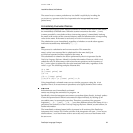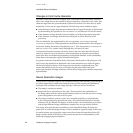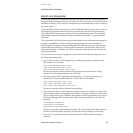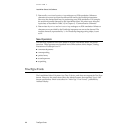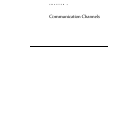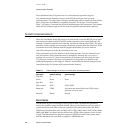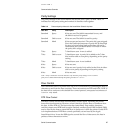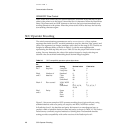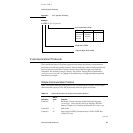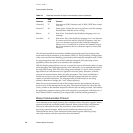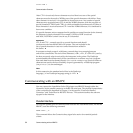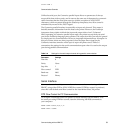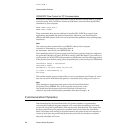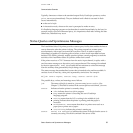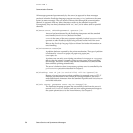
CHAPTER 3
Communication Channels
56 Status Queries and Spontaneous Messages
All messages generated spontaneously by the server (as opposed to those messages
produced when the PostScript language program executes print) conform to the same
syntax as status messages. They are sent as ordinary data through the communication
channel, in sequence with any other characters written to the standard output file.
Consequently, they are always bracketed with %%[ and ]%% for either serial or parallel
channels:
%%[Error:error; OffendingCommand: operator ]%%
An error has been detected by the PostScript interpreter and the standard
error handle (handleerror) has been invoked.
error is the name of the error operator originally invoked operator is the
operator or other PostScript object being executed at the time of the error
Refer to the PostScript Language Reference Manual for further information on
error handling.
%%[PrinterError:reason]%%
A problem has been reported by the printer mechanism. The type of problem
is indicated by reason: no paper, no paper tray, paper jam,
cover open, etc.
A printer error can only occur during execution of showpage or copypage,
that is when the printer is actually trying to print a page. After generating
this message, the server usually waits for the condition to be corrected and
then continues printing automatically.
The server’s behavior when it encounters a printer error is controlled by the
printererror procedure described in Chapter 3.
%%[Flushing: rest of job (to end-of-file) will be ignored ]%%
Because of a previous error or abort condition, for example stop or CTL-C
interrupt, the remainder of the current job is being discarded. The server
reads and discards characters from the standard input file until it receives an
end-of-file indication.
%%[exit server: permanent state may be changed ]%%
The PostScript language program has successfully exited from the server’s
normal save/restore context, and may now make permanent changes to
the system parameters or to the virtual memory. See Chapter 3.



